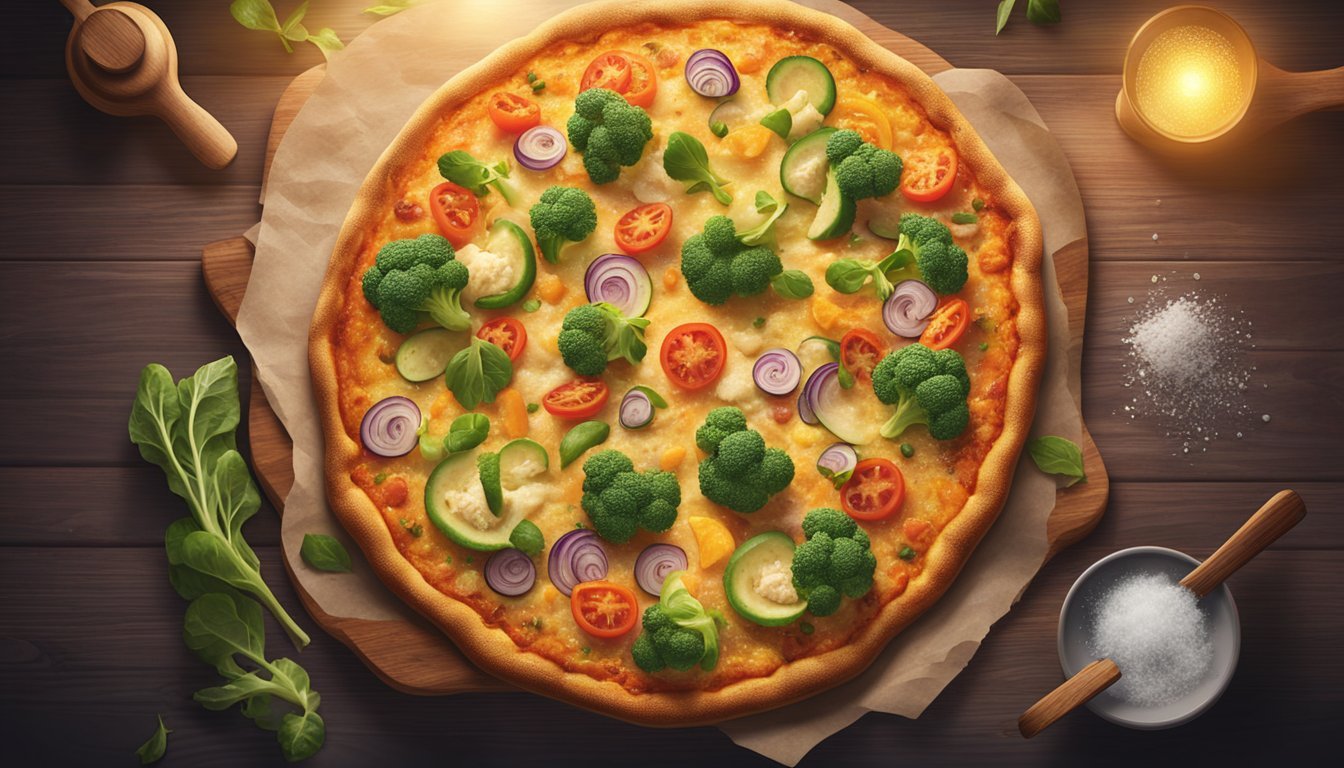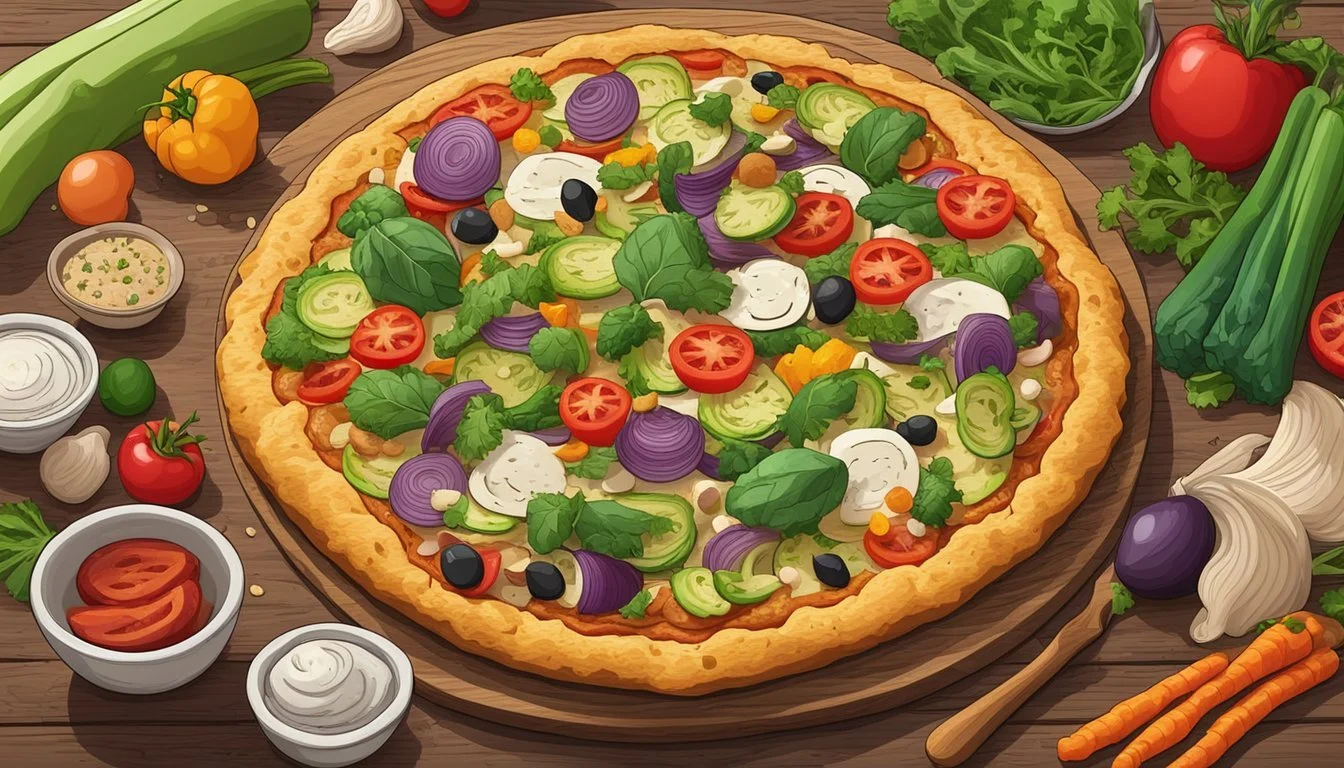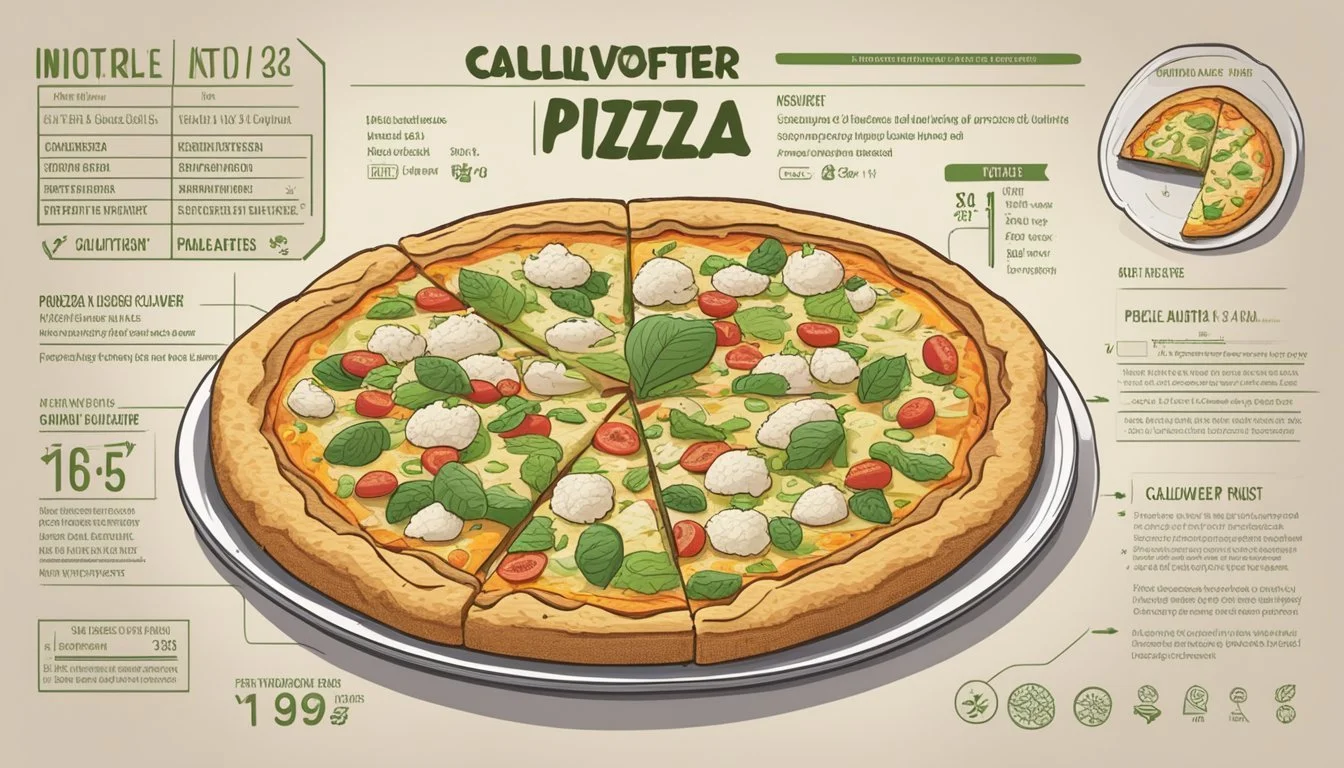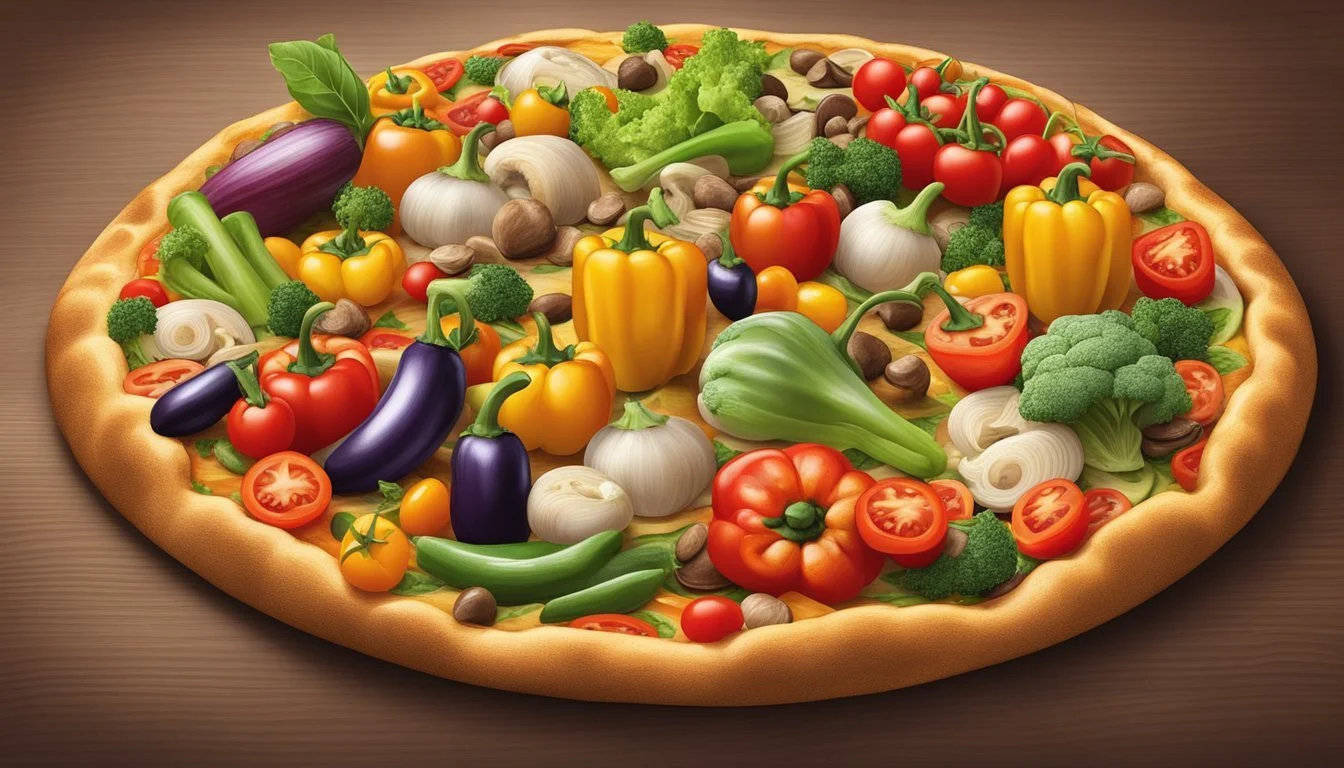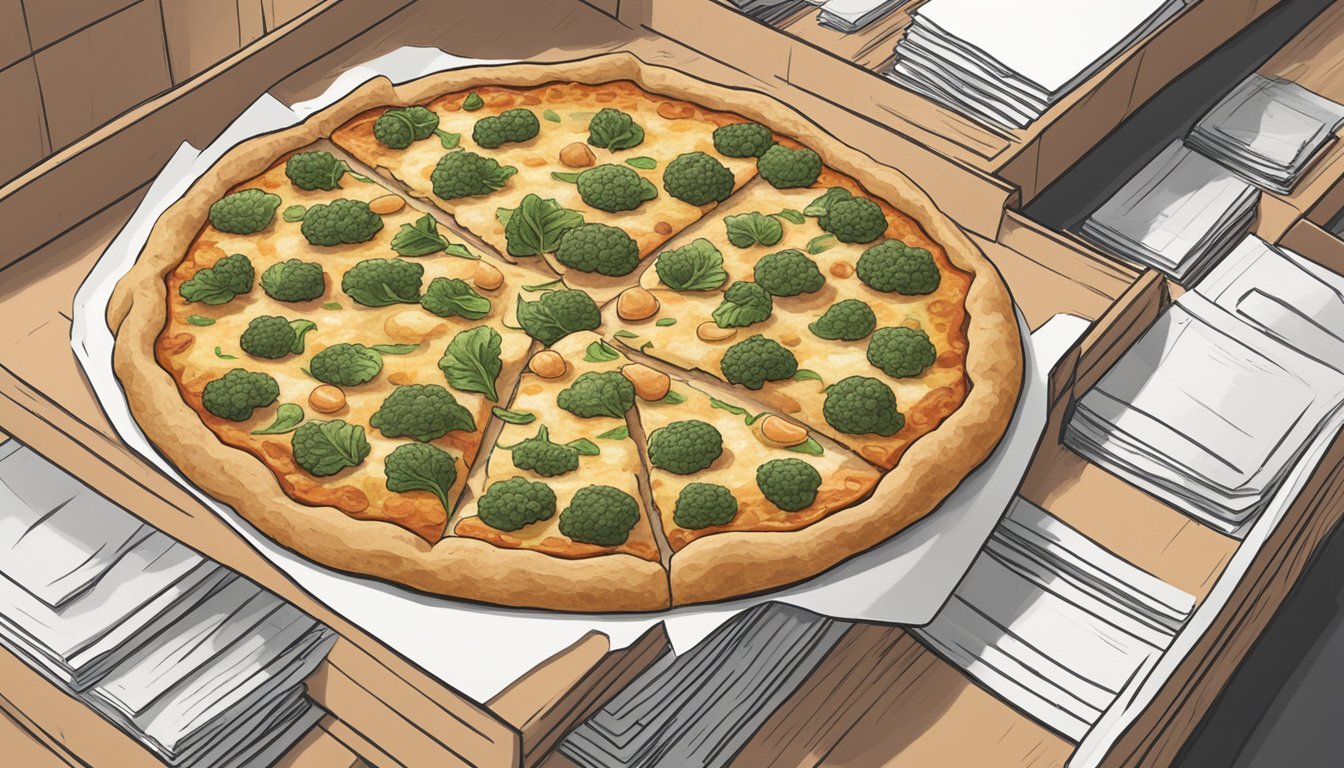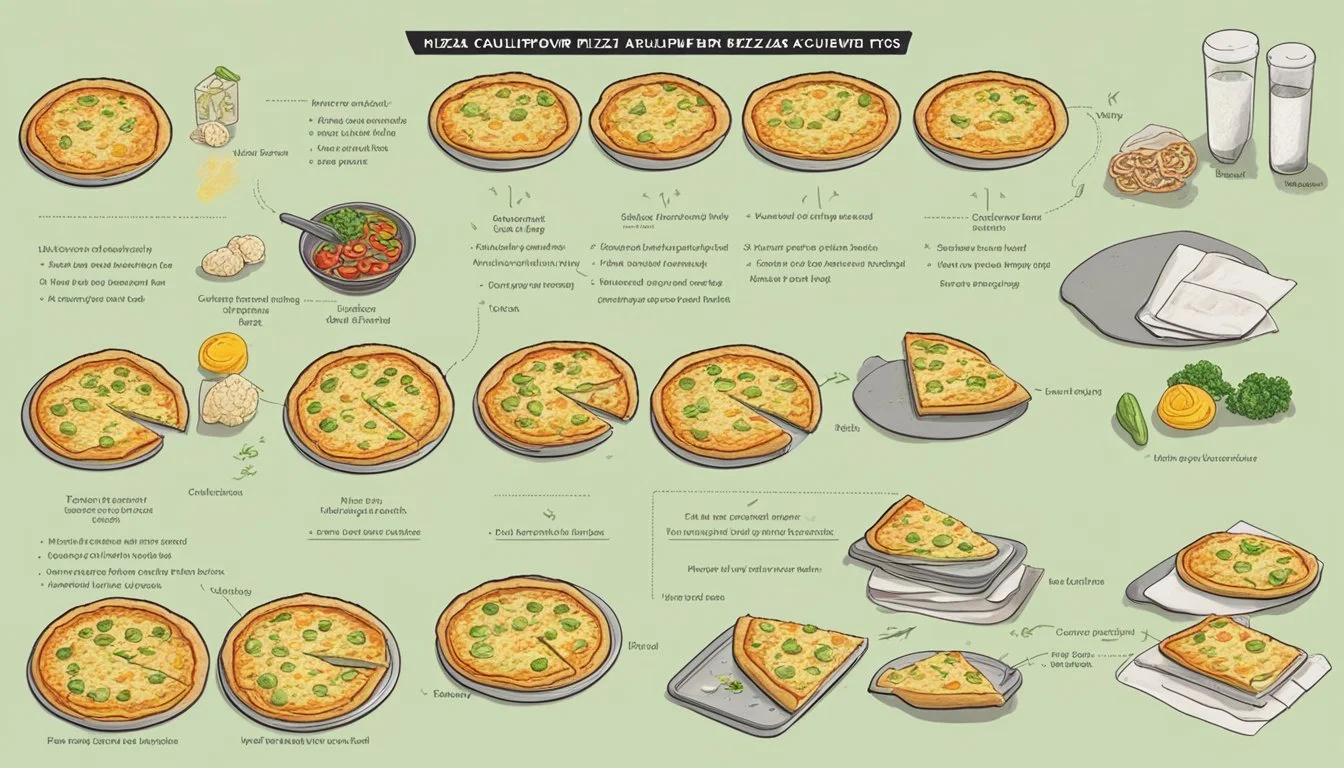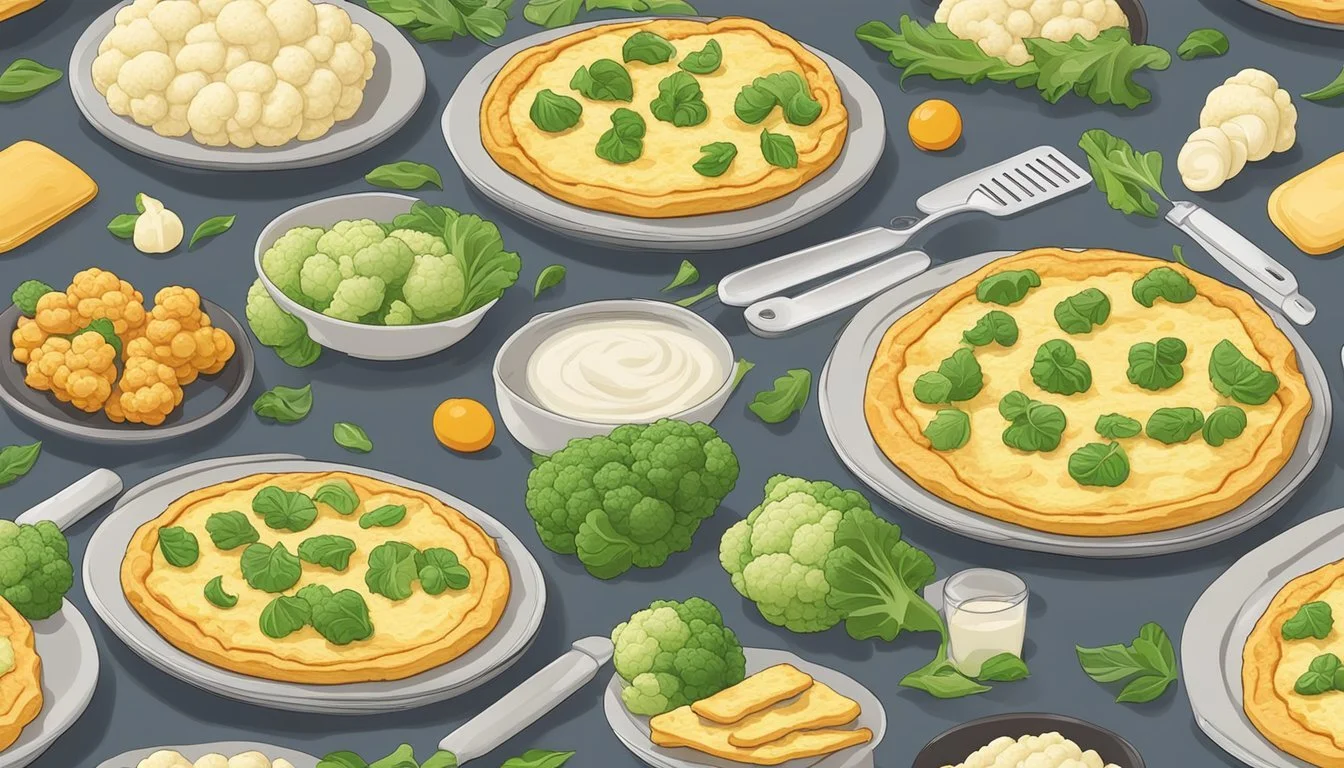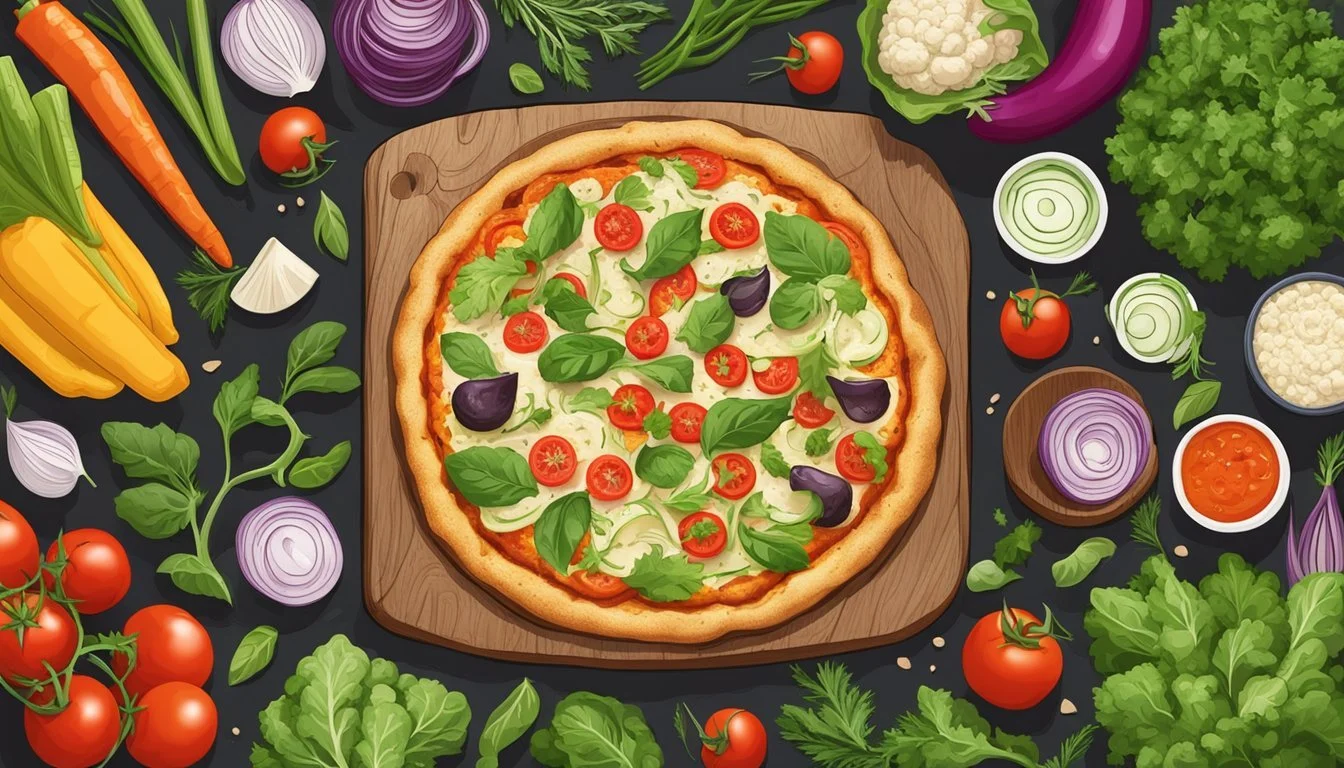How Long Does Cauliflower Crust Veggie Pizza Last?
Storage Tips and Shelf Life
Cauliflower crust veggie pizza has gained popularity for its delicious taste and health benefits. Not only is it a great way to reduce carbs, but it also caters to gluten-free diets. Typically, a cauliflower crust veggie pizza can last in the refrigerator for up to 4 days when stored properly in an airtight container.
It's crucial to ensure that the pizza is cooled before refrigerating to prevent moisture buildup, which can make the crust soggy. For those wishing to extend its shelf life, freezing is a viable option. Cauliflower crust veggie pizza can be frozen for up to two months, allowing you to enjoy this nutritious meal at your convenience.
This guidance helps you maintain the satisfactory texture and flavor of your cauliflower pizza while minimizing waste. Keeping these storage tips in mind ensures that you can savor every bite without compromising on taste or quality.
Understanding Cauliflower Pizza Crust
Cauliflower pizza crust offers a grain-free and gluten-free alternative to traditional pizza dough. It caters to various dietary needs, including low-carb and healthy eating preferences.
One of the main ingredients is cauliflower rice, made by grating or processing riced cauliflower until it reaches a rice-like consistency. This base is a powerhouse of fiber and other nutrients, making it both nutritious and filling.
Ingredients Used
Cauliflower
Eggs (to bind the crust)
Cheese (optional for additional flavor and texture)
Herbs and spices (for seasoning)
Different recipes may vary slightly, but these core ingredients are common across most cauliflower recipes for pizza crusts.
Preparation Methods
There are a few methods to prepare the cauliflower:
Microwaving for a quick cook.
Steaming until tender.
Baking the grated cauliflower to remove moisture.
After cooking, the cauliflower is typically drained and pressed to remove excess water. This prevents a soggy crust. Once drained, the dry cauliflower is mixed with other ingredients to form a dough.
Nutritional Benefits
Cauliflower pizza crust is low carb and rich in fiber, making it a healthy choice compared to traditional pizza dough. It also fits into several diet plans like keto and autoimmune paleo.
Cooking and Baking
The formed dough is spread on a parchment-lined baking sheet and baked until golden brown and firm. Depending on the recipe, baking temperatures may range from 350°F (175°C) to 425°F (220°C), ensuring the crust becomes crispy without burning.
Essential Ingredients and Substitutions
Preparing a cauliflower crust veggie pizza requires a careful selection of ingredients to ensure the best texture and flavor. Substitutions can also be made to accommodate various dietary preferences without compromising on the quality.
Primary Components
Cauliflower is the star ingredient for the crust. Fresh cauliflower should be riced finely using a food processor or box grater. Eggs act as a binder, holding the crust together. For those avoiding eggs, a flax egg (1 tablespoon ground flaxseed mixed with 2.5 tablespoons water) can be an effective substitute.
Mixing in almond flour provides a sturdier base and a nutty flavor. This balance of cauliflower, eggs, and almond flour ensures a cohesive and delicious crust.
Cheese Varieties
Parmesan and mozzarella are commonly used cheeses in cauliflower crust recipes. Parmesan adds a rich, nutty flavor, while mozzarella contributes to the crust's chewy texture. Dairy-free substitutes such as nutritional yeast or vegan mozzarella can be used without significantly altering the taste.
For a sharp flavor and better melt, fresh mozzarella is recommended over pre-shredded varieties, as the latter often contain anti-caking agents that affect texture.
Seasonings and Flavor Enhancers
Garlic powder, oregano, salt, and pepper are essential for seasoning the cauliflower crust. These add depth and complexity to the flavor profile. Fresh garlic can be used for a more intense flavor, while dried herbs mix easily into the crust.
Incorporating fresh basil either into the crust or as a topping can enhance the pizza's aroma. A drizzle of olive oil before baking can also improve the crust's crispiness and taste.
Vegan and Dietary Alternatives
For those following a vegan or keto diet, substitutions are key. Flax eggs can replace regular eggs, and almond flour or coconut flour can replace wheat flour for a gluten-free option. Vegan cheeses, like plant-based mozzarella or nutritional yeast, offer cheesy flavors without dairy.
In sauces, opting for a homemade tomato or cashew cream sauce ensures they remain keto or vegan-friendly while still complementing the cauliflower crust's flavors.
Preparation and Cooking Tips
Creating a flawless cauliflower crust veggie pizza involves using the right tools and techniques to ensure the crust has the ideal texture and avoiding common pitfalls like soggy results.
Creating the Perfect Crust
To start, fresh or frozen cauliflower rice can be used. If using fresh cauliflower, a food processor helps achieve the right consistency by pulsing florets until they turn into rice-like pieces.
Next, cook the cauliflower rice in the microwave for 5-7 minutes, which helps remove excess moisture. After microwaving, place the cauliflower in a cheesecloth or towel and squeeze out as much water as possible. This is crucial to prevent a soggy crust.
Combining the cauliflower with ingredients like parmesan cheese, mozzarella, eggs, and herbs helps bind the mixture. Spread the mixture evenly on parchment paper or a pizza stone and shape it into a circle. Bake at 400°F for about 20 minutes or until golden and firm.
Cooking Techniques and Times
The crust should be pre-baked alone before adding any toppings. This pre-bake usually takes around 20 minutes at 400°F to ensure it becomes firm and slightly crispy. Using a pizza stone can improve the texture by evenly distributing heat.
Once the crust is ready, add your desired toppings. It’s best to use a layer of sauce, cheese, and a variety of veggies without overloading, to maintain the structural integrity of the crust. Bake the topped pizza for an additional 10-12 minutes at the same temperature.
For a crispier result, allow the pizza to cool slightly on a wire rack instead of directly on a solid surface, preventing moisture accumulation. Total prep to cook time will typically be about 35-40 minutes.
Nutritional Information
Cauliflower crust veggie pizza is known for its nutrient-rich profile. This type of pizza typically offers a healthier alternative to traditional pizzas.
A standard serving may contain around 110 calories. This makes it a lower-calorie option compared to regular pizza crust, which can have over 800 calories per 10-inch crust.
Nutritional Content per Serving:
Fat: 4-7 grams
Carbohydrates: 33 grams
Fiber: 4-5 grams
Sodium: 470 mg
Potassium: 190 mg
The crust is often gluten-free, making it a suitable choice for individuals with gluten intolerance or those following a gluten-free diet.
Cauliflower is rich in fiber, which supports digestive health. It also contains essential vitamins and minerals such as vitamin C, vitamin K, folate, and potassium.
These pizzas are generally considered low-carb, making them a good option for diabetics and those on ketogenic diets. The presence of antioxidants in cauliflower can also help in reducing inflammation and protecting against certain diseases.
Ingredients like mozzarella cheese, rice flour, and egg whites contribute to the protein content, making it a balanced and nutritious choice. In addition to being high in nutrients, cauliflower crust veggie pizzas are delicious and offer a wholesome alternative for pizza lovers.
Topping Suggestions and Variations
When creating a cauliflower crust veggie pizza, the choice of toppings can make a significant difference in flavor and texture. Here are both classic and innovative topping ideas to enhance your pizza.
Classic and Popular Options
Traditional pizza toppings such as mozzarella cheese, parmesan cheese, and tomato sauce are always a hit. Start with a generous layer of fresh mozzarella for a gooey base.
Add sliced mushrooms, red onion, and bell pepper to bring a rich, earthy taste and vibrant colors.
Olives and basil can add aromatic and slightly bitter notes. For a bit of spice, freshly ground pepper works well.
Sprinkle grated parmesan to give your pizza an extra cheesy and slightly nutty finish.
Using these standard toppings ensures a crowd-pleasing pizza that maintains a balance of creamy, tangy, and savory flavors.
Innovative and Unique Combinations
For those looking to experiment, consider goat cheese for a creamy and tangy alternative to mozzarella. A drizzle of pesto can bring an herby and nutty flavor that pairs well with cauliflower crust.
Pineapple alongside bell pepper creates a sweet and savory contrast, perfect for a tropical twist. You can also incorporate fresh mozzarella for its distinctive melt and mild flavor.
Try topping your pizza with pesto instead of tomato sauce and adding some red onion for a unique flavor profile.
Don't forget about adding some basil leaves after baking for a fresh, aromatic touch. These combinations can turn a simple pizza into a gourmet delight with varied textures and flavors.
Storing and Shelf Life
Proper storage extends the life of cauliflower crust veggie pizza, ensuring it remains flavorful and safe to eat. Follow these guidelines for refrigeration and freezing to maximize the pizza's shelf life.
Refrigeration Guidelines
Cauliflower crust veggie pizza can be stored in the refrigerator for optimal freshness. Leftovers should be placed in an airtight container or wrapped tightly in aluminum foil to prevent moisture loss.
The shelf life of refrigerated pizza typically ranges from 3 to 4 days. Make sure the refrigerator maintains a consistent temperature below 40°F (4°C) to slow down bacterial growth.
To keep your pizza at its best, avoid leaving it at room temperature for more than 2 hours. This prevents bacterial growth and enhances food safety.
Freezing for Long-Term Storage
For extended shelf life, freezing is the best option. First, let the cauliflower crust veggie pizza cool completely to prevent ice crystals from forming.
Wrap individual slices tightly in aluminum foil before placing them in a freezer-safe zip-top bag. Label and date the bag for easy reference.
Frozen pizza can last for up to 2 months without significant loss of quality. When ready to eat, thaw the pizza in the refrigerator for several hours or overnight before reheating.
Reheat the pizza in an oven or toaster oven at 375°F (190°C) until it reaches 165°F (74°C). Avoid microwaving, as this can make the crust soggy. This method preserves the texture and flavor of the cauliflower crust veggie pizza.
Reheating and Serving Directions
To reheat cauliflower crust veggie pizza, preheat the oven to 375°F (190°C). This ensures the crust stays crispy and the cheese melts evenly. Place the leftovers on a baking sheet and heat for 10-15 minutes.
For a quicker option, use a microwave. Place the pizza on a microwave-safe plate and heat for 1-2 minutes. The crust might soften, but the cheesy toppings will still taste great.
For a fresh-out-of-the-oven crisp, heat a skillet over medium heat. Add a small amount of olive oil or cooking spray to prevent sticking. Place the leftover slice in the skillet and cover with a lid. Heat for about 3-4 minutes, ensuring the crust becomes crispy.
When the pizza is ready, use a pizza cutter to portion out servings. This helps maintain the integrity of the crispy crust and ensures even pieces.
For optimal taste, serve the reheated pizza immediately. Leftovers should be consumed within 2-3 days of refrigeration to ensure the best flavor and texture.
Making Cauliflower Pizza Crust Ahead of Time
Prep time for a cauliflower pizza crust is generally around 15-20 minutes. This includes ricing and cooking the cauliflower. Cook time varies but typically ranges between 20-25 minutes at 400°F to 425°F.
Making the crust ahead of time can be a real time-saver. After preparing and baking the crust, allow it to cool completely. Once cooled, wrap it tightly in plastic wrap or place it in an airtight container. This method can keep the crust in the fridge for up to 4 days.
For longer storage, freezing is a good option. Stack the crusts between sheets of parchment paper and then cover tightly with plastic wrap or aluminum foil. Store them in the freezer for up to 1 month. When ready to use, thaw the crusts in the fridge overnight.
Pizza toppings can be prepped in advance as well. Chop vegetables, cook meats, and grate cheese ahead of time. Store these toppings in separate containers in the fridge.
To assemble, preheat the oven to 425°F. Add your desired toppings to the thawed or refrigerated crust and bake for an additional 10-15 minutes, or until the cheese is melted and bubbly.
Table of Storage Methods
Method Storage Time Instructions Refrigerator Up to 4 days Cool crust, wrap in plastic/airtight container Freezer Up to 1 month Cool crust, stack with parchment, wrap in foil/plastic
Taking these steps ensures a quick and easy meal when you're pressed for time.
Health Benefits and Dietary Considerations
Cauliflower crust veggie pizza offers various health benefits and dietary accommodations, including being gluten-free, low-carb, and keto-friendly. Additionally, it caters to those with specific food allergies.
Gluten-Free and Celiac Considerations
Cauliflower pizza crust is a suitable option for those with gluten intolerance or celiac disease. Traditional pizza crusts contain gluten, which can cause adverse reactions in people with these conditions. The cauliflower in the crust ensures that it is naturally gluten-free.
Furthermore, using alternative flours like almond flour instead of wheat flour provides a safe and digestible crust. This makes cauliflower pizza a valuable choice for individuals adhering to a gluten-free diet without compromising flavor or texture.
Low-Carb and Keto Diets
The cauliflower crust is especially beneficial for individuals on low-carb and keto diets. Unlike traditional pizza crusts that use refined flour, the cauliflower base significantly reduces carbohydrate content.
This lower carb count helps maintain ketosis for those on a keto diet. Additionally, the fiber content in cauliflower aids digestion and helps keep blood sugar levels stable. With its low carb and high fiber profile, cauliflower crust veggie pizza can be a valuable addition to a ketogenic meal plan.
Allergen Information
Cauliflower crust pizza can be customized to accommodate various dietary restrictions and allergens. While it is naturally gluten-free, many recipes can also be made dairy-free by substituting cheese with plant-based alternatives. Using almond flour can also cater to those with wheat allergies.
However, those with nut allergies should be cautious and consider alternatives like coconut flour. Understanding the ingredients used can help avoid any potential allergens and ensure a safe, enjoyable meal for all dietary needs.


